Nokia Lumia 800 Review - Nokia's Brave New Foray into WP7
by Brian Klug on January 4, 2012 7:00 AM EST- Posted in
- Smartphones
- Nokia
- windows phone 7
- Mobile
- WP7
- Lumia
- Lumia 800
Introduction
The Nokia Lumia 800 is without a doubt one of the most interesting devices produced by the iconic Finnish smartphone manufacturer in a long while. Expectations are high for the Lumia series, which represents Nokia’s first foray into devices running Windows Phone 7.5. At the same time, we haven’t touched many Windows Phones since our initial review what seems like ages ago, but the platform has moved along, giving us an opportunity to finally take a formal look at the new things Windows Phone 7.5 brings.
It’s easiest to just start with the aesthetics, and here the Lumia 800 shows a huge amount of influence from the Nokia N9. Though we don’t have an N9, it’s comparatively easy to confuse the two based on just how similar their exteriors are, though inside both are completely different beasts. Of course, this form factor borrows a lot from what made the Nokia N8 such a unique device - unibody design, rounded edges, tapers, and a flat top and bottom. The only downside to this unibody construction is having the battery sealed inside, which isn’t quite a deal breaker but is worth noting.
The Lumia 800 (and N9) physically depart from the previous generation of Nokia designs in a major way by eschewing anodized aluminum in favor of a monobody polycarbonate plastic exterior. Of course, this led to much gnashing of teeth over whether the Lumia 800 would feel plasticky, and many looking at this change in materials as a step backwards. Unsurprisingly, the handset doesn’t feel cheap or plasticky at all. I’ve seen Nokia refer to the exterior as polymer a few times (much the same way some weapon manufacturers refer to things as polymer in place of “plastic”) and honestly after playing with and holding the Lumia for so long I’m convinced the phone pulls this material swap off quite well. The only downside is that skin oil does discolor the plastic visibly (at least the black variant we have), but it isn’t anything a wipe with a microfiber cloth can’t fix.
Part of what really helps the Lumia feel good is the fact that the exterior isn’t glossy or mirror-smooth, but rather given a light matte texture. It doesn’t scuff with a fingernail either like some other matte-finished plastics. In addition, it’s striking how nice having a uniform round edge at the left and right side helps ergonomics. It really is one solid piece, minus the display glass.
The only completely flat parts on the Lumia 800 are the top and bottom, with the rest of the phone having a convex spherical shape. On the backside, the only part of the phone that is indeed flat (and thus sits coplanar with a surface) is the chrome “Nokia / Carl Zeiss Tessar” strip which houses the camera. The only major annoyance I have with the whole design is that putting chrome right where the device lays flat just invites scratches. Even with a case on, the chrome strip has picked up some scratches that definitely show at the right angle. To the right of this strip is a dual LED flash, and a tiny little cutout home to a second microphone undoubtably for noise cancelation when on calls.
At the very top is the standard headphone jack at far left, and the two doors for both microUSB and microSIM. The microUSB door has a raised region to demark where to press, and pushing here pops up the door which is held shut with magnets otherwise. I worry this door is the first thing that will break off, but it’s nice having a covered port. Right next to that is the microSIM tray, which slides over and then out. The door has some contacts on it that seem to be used with logic to tell when you’ve ejected the SIM as well. It’s also inside here that Nokia places the model number, FCC ID, and all that jazz. It’s with these two open that you can see the only two screws on the device as well, which look like some Torx bits.
It’s intriguing to me that we’re now seeing microSIMs popping up everywhere and in so many devices. While this used to be a big deal, SIM cutters are now so ubiquitous that it’s impossible to fault anyone for using one.
On the right side, Nokia puts the volume rocker above the power button, and then on the lower quarter is the mandatory two-step camera button. I have no complaints with any of the buttons; obviously, Nokia has this down and I have no doubt they’re communicative enough to use even with gloves on.
The bottom of the Lumia 800 is home to some more European regulatory markings, and the speaker grille which hides the speakerphone and microphone. More on this later, but I unfortunately found the Lumia 800’s speakerphone incredibly quiet.
The left side is devoid of buttons, and really feels good. When I look at the ports arranged this way, I feel that they’re designed to accommodate the phone being held in the left hand, with the fingers naturally resting right on the buttons.
The front is one homogenous piece of glass with the three mandatory Windows Phone buttons at the bottom, all capacitive and backlit. I have no complaints with the capacitive buttons - they work perfectly. Curved displays are all the rage lately, and again the Lumia 800 has a convex shape that bows outwards spherically, including the front glass. It isn’t huge, but it’s enough to be perceptible. Up at the very top is the narrow slit for the earpiece.
I’ve put together the usual comparison table and tossed in the Focus S (which we'll review soon) for good measure. Windows Phone land is still dominated by Qualcomm SoCs, and at this point all the phones shipping are now using single core S2 (MSM8x55 or MSM7x30) variety. Both the Lumia 800 and 710 run their MSM8255s at 1.4 GHz. In addition there are actually two variants of the Nokia Lumia 800 - the RM-801 which we have, and the RM-819 which differ in what WCDMA bands are present, but more on that later.
| Physical Comparison | ||||||
| Apple iPhone 4S | HTC Sensation | Samsung Focus S | Nokia Lumia 800 | |||
| Height | 115.2 mm (4.5") | 126.3 mm (4.97") | 126.1 mm (4.96") | 116.5 mm (4.59") | ||
| Width | 58.6 mm (2.31") | 65.5 mm (2.58") | 66.8 mm (2.63") | 61.2 mm (2.41") | ||
| Depth | 9.3 mm ( 0.37") | 11.6 mm (0.46") | 8.5 mm (0.33") | 12.1 mm (0.48") | ||
| Weight | 140 g (4.9 oz) | 148 g (5.22 oz) | 125 g (3.9 oz) | 142 g (5.0 oz) | ||
| CPU | Apple A5 @ ~800MHz Dual Core Cortex A9 | 1.2 GHz Dual Core Snapdragon MSM8260 | 1.4 GHz Single Core Snapdragon MSM8255 | 1.4 GHz Single Core Snapdragon MSM8255 | ||
| GPU | PowerVR SGX 543MP2 | Adreno 220 | Adreno 205 | Adreno 205 | ||
| RAM | 512MB LPDDR2-800 | 768 MB LPDDR2 | 512 MB LPDDR2 | 512 MB LPDDR2 | ||
| NAND | 16GB, 32GB or 64GB integrated | 4 GB NAND with 8 GB microSD Class 4 preinstalled | 16 GB NAND (no external microSD) | 16 GB NAND (no external microSD) | ||
| Camera | 8 MP with LED Flash + Front Facing Camera | 8 MP AF/Dual LED flash, VGA front facing | 8 MP AF/LED, 1.3 MP front facing | 8 MP AF/Dual LED Flash, 720p Video Rec. | ||
| Screen | 3.5" 960 x 640 LED backlit LCD | 4.3" 960 x 540 S-LCD | 4.3" 800 x 480 SAMOLED+ | 3.7" 800 x 480 SAMOLED w/ClearBlack | ||
| Battery | Internal 5.3 Whr | Removable 5.62 Whr | Removable 6.1 Whr | Internal 5.37 Whr | ||
Nokia also does something interesting and ships a rubberized exterior skin with the Lumia 800 right in the box. This is a welcome thing to do that I wish more smartphone OEMs would do. The rubberized skin doesn’t cover any of the buttons or ports and keeps the backside off rough surfaces to prevent scratching. I spent most of my time with the Lumia 800 in the rubberized case, but more because I worry about shipping devices back all scuffed up than out of worry about build quality.
I think that’s the major takeaway in the look and feel department. Though we haven’t reviewed every Windows Phone formally, I’ve at least touched every one of them, and the Lumia 800 is without a doubt the absolute best Windows Phone hardware out there right now. Build quality is excellent, the phone feels substantial in the hand, and the form factor and shape have a spark of - something different - people were looking for when they thought about Nokia making a Windows Phone.


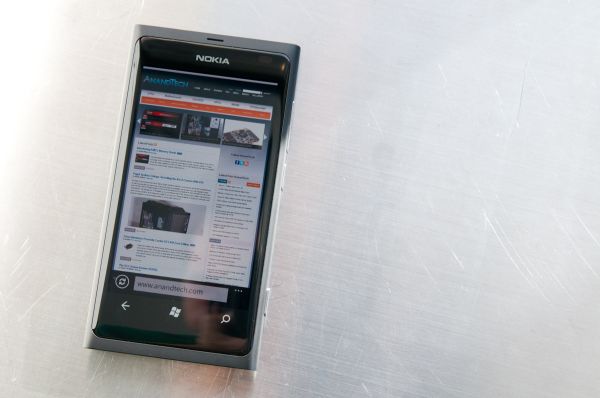
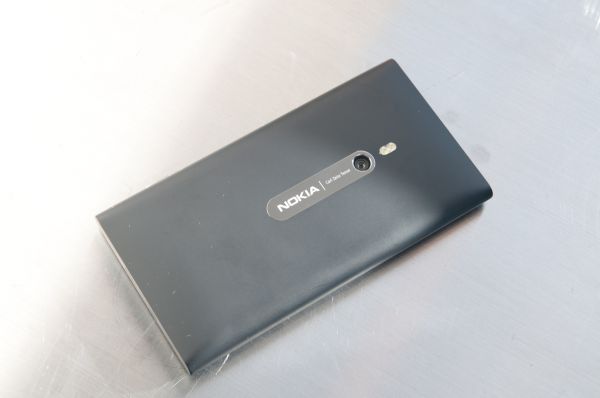
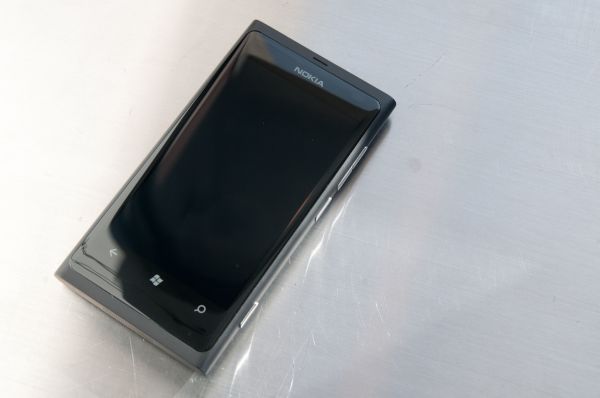
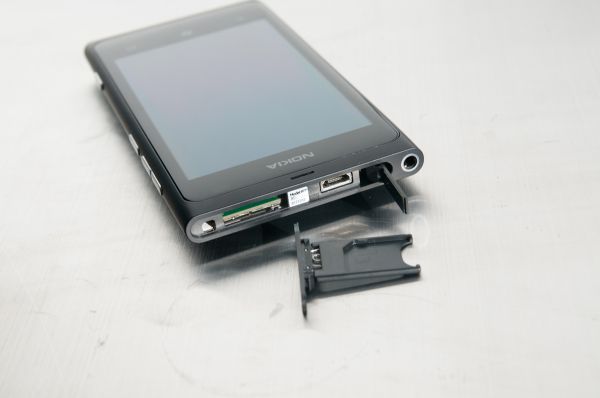
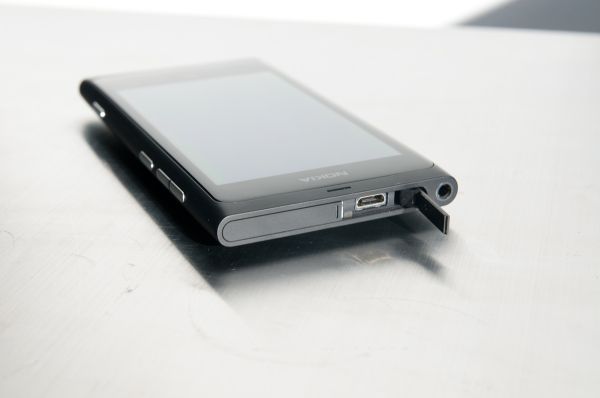
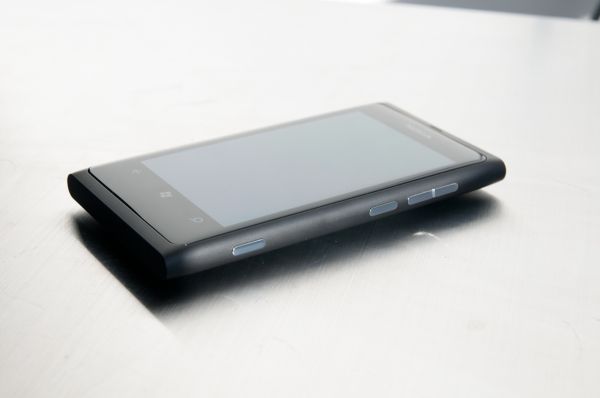

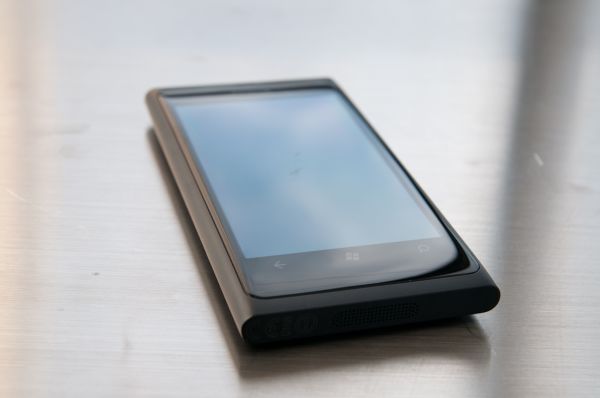






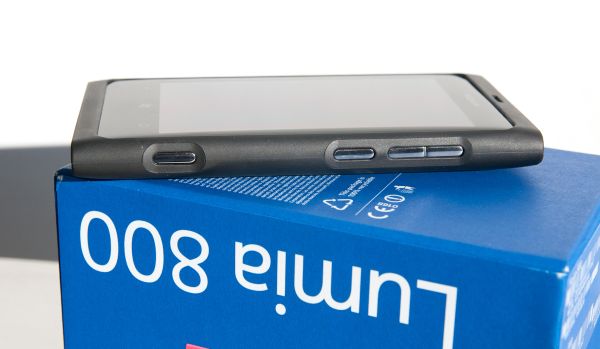








120 Comments
View All Comments
Starfireaw11 - Wednesday, January 4, 2012 - link
For the most part, my Lumia 800 is fast, responsive and smooth. There are a few times where you do notice a bit of a slowdown, but certainly nothing worse than any other phone I've ever come across.A smartphone will always be a balancing act between power consumption, cost and performance, while maintaining a small form-factor. While a Xeon based smartphone would be possible, I don't see one being commercially successful for some reason :D
bplewis24 - Wednesday, January 4, 2012 - link
Android doesn't have bloated applications nor a bloated OS. Troll harder, or become informed as to what you actually speak of.N4g4rok - Wednesday, January 4, 2012 - link
My apologies, i should have specified.Over time, Android will slow down from fragmentation issues, like most OS's, but i've read more complaints recently about older versions of Android.
And unfortunately, due to poor coding, applications will occasionally succumb to memory leaks, further bogging down the OS. Of course killing the application will fix the problem.
It does not make Android inherently bad. It just makes the point that the OS would likely struggle on lower powered single core SoC's that some other phones have.
Penti - Wednesday, January 4, 2012 - link
Making core applications and libraries thread on a dual-core or quad-core SoC is just one way of speeding up some of the slower bits. But that's just a stop gap and just one way of doing it. You could just as easily do improvements for single-core SoC's there as well. Fragmentation actually helps overcome some of this. As the vendors put in improvements and eventually gets Google to redesign or implement new things. Just as you would get an actual NDK for WP at some point and can actually write and port normal applications to that platform. Which isn't trouble free. Which will hit limitations and which will fragment ones phone makers invest some into that platform. Nokia and ST-E will bring in none-Qualcomm hardware. They will bring in core alterations to the software and platform and eventually as it has already proven it will be hard to maintain everything.Just remember WP7 didn't even get sockets until Mango. Stuff like Spotify was ready for MeeGo at pretty much when Nokia released a device and released before Mango got it's client. Just because it got another model to paint stuff on the screen doesn't mean it is superior. Of course poor launchers can destroy a phone, but that is not where it's heading at with many of the vendors having already improved on that. Just look in another year and you will see a whole different market with dual-core being the standard platform driving WP. It took a year to even get basic applications on there... The development kit hasn't been proven as good as advertised by astroturfers. Nobody will make a business on a platform where you can sit and wait a year for even features 10 year old feature phones had.
N4g4rok - Wednesday, January 4, 2012 - link
I agree with that, and i do not mean to insist that WP7 is or will be superior to anything else.The options and large market share that Android offers makes it extremely attractive to multiple vendors, and on top of that, it's flexibility as a development platform is the icing on the cake. Combine that with Google's monitoring of software compatibilities and updating to suit, you end up with a solid, stable platform, just like their most recent releases are shaping up to be.
WP7 has neither of those qualities just yet. Although Microsoft may move in that direction with future releases,but they're taking their time to do it. Taking the time to ensure hardware compatibility is great, but like you mentioned, taking too long getting it up to speed will achieve nothing other than wasting a lot of time and money.
crispbp04 - Wednesday, January 4, 2012 - link
Look at the pot calling the kettle black.doubledeej - Thursday, January 5, 2012 - link
I've had two different top-of-the-line Android phones and they were both horribly slow and liked to stutter constantly. It was very annoying. I switched to WP7 and haven't looked back.steven75 - Wednesday, January 4, 2012 - link
"I've had the device for about a month now and I have to agree with everything that has been said in this article - I'm really happy with it and it's a huge improvement over the iOS,"Except the review doesn't say this. It basically points out that WP7 Mango is where iOS and Android were a year ago.
crispbp04 - Wednesday, January 4, 2012 - link
Weak editorial. I lol'd at "fledgling application ecosystem".Spivonious - Wednesday, January 4, 2012 - link
Yeah, aren't there like 200,000 apps now? All of the needed ones are there.I've been very impressed with WP7 Mango. The fact is that you don't need apps because lots of functionality is built in. People hub gets you Facebook, Twitter, LinkedIn, as well as standard contact info and links to send texts, IMs, emails, post on walls, etc. The Messaging hub combines texting, IM, and emails, grouped by the person you're conversing with. The Xbox hub places all of your games in one place. The Music+Video hub places all of your media and media-watching apps in one place. Bing Search combines web search, Sound Hound, Google Goggles, and Yelp.
And live tiles on the main screen let me see what I'm looking for without opening an app.
The strength of WP7 is the integration of services in one place. It's perfect for the average consumer.